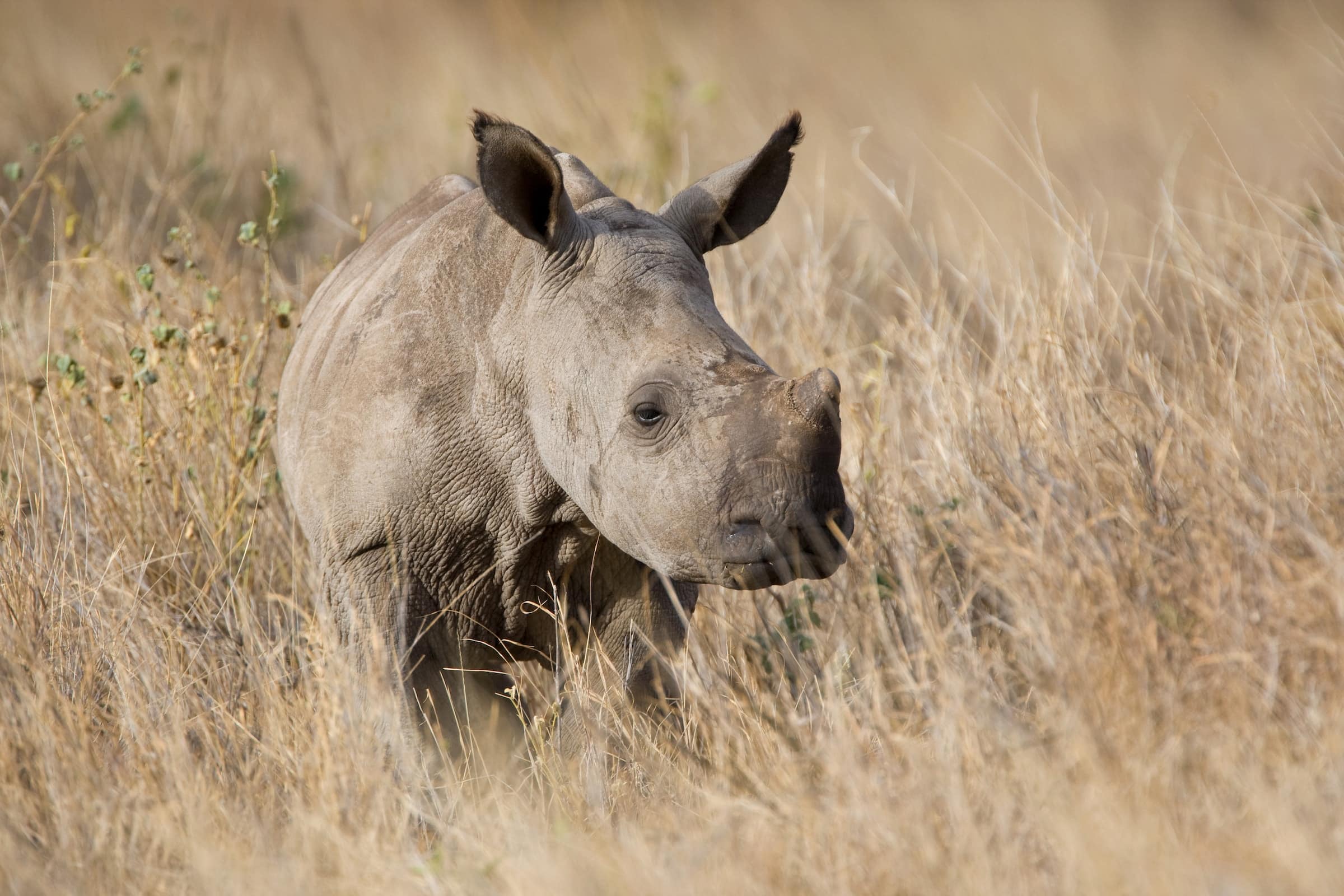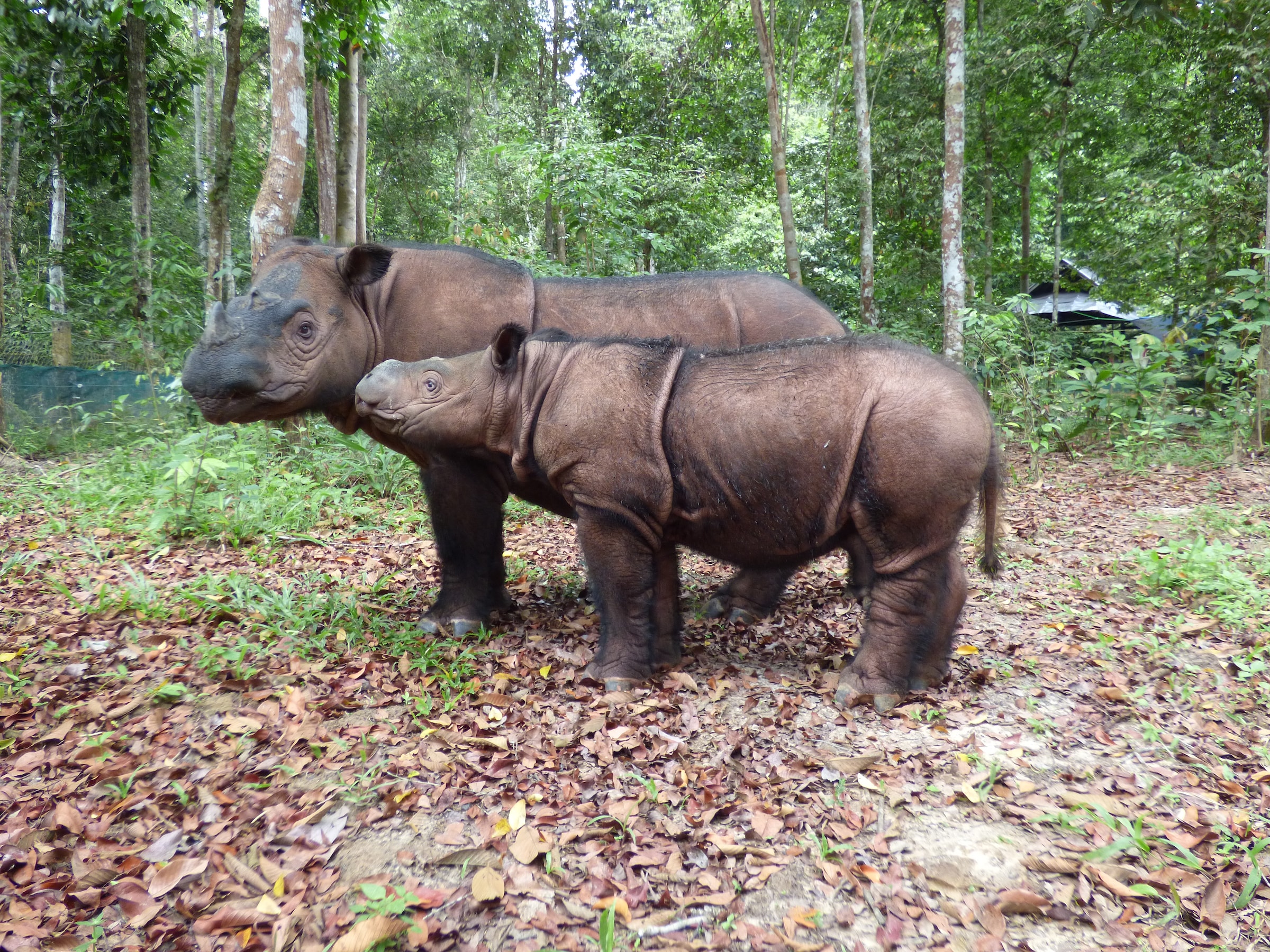Wide-eyed and adorably stocky, a newborn rhino will be up and walking within its first hour of life, albeit a bit wobbly. Small in comparison to its towering mother, a rhino calf can still weigh between 88 and 140 pounds at birth.

Most rhino species are born with little to no hair, with the exception of Sumatran rhinos, which are born with a dense amount of hair since they are closest related to the prehistoric woolly rhino that went extinct thousands of years ago. All rhino calves have a conical nubbin from which their horns begin emerging within a few months. Still, it takes many years before their horns are fully grown.

Rhino reproduction is a lengthy process. Female rhinos wait two to five years between rearing young, and their gestation lasts about 16 months. In addition to nourishment, rhino mothers provide critical protection from predators. In Asia, rhino calves are preyed upon by tigers and leopards, and in Africa, by lions and hyenas. They are especially vulnerable at night since rhino eyesight is not especially acute.

Rhino calves always stay close to their mothers for the first two to four years of life. Then, once their horns have grown, young rhinos strike out on their own and can live up to 45 years in the wild.

